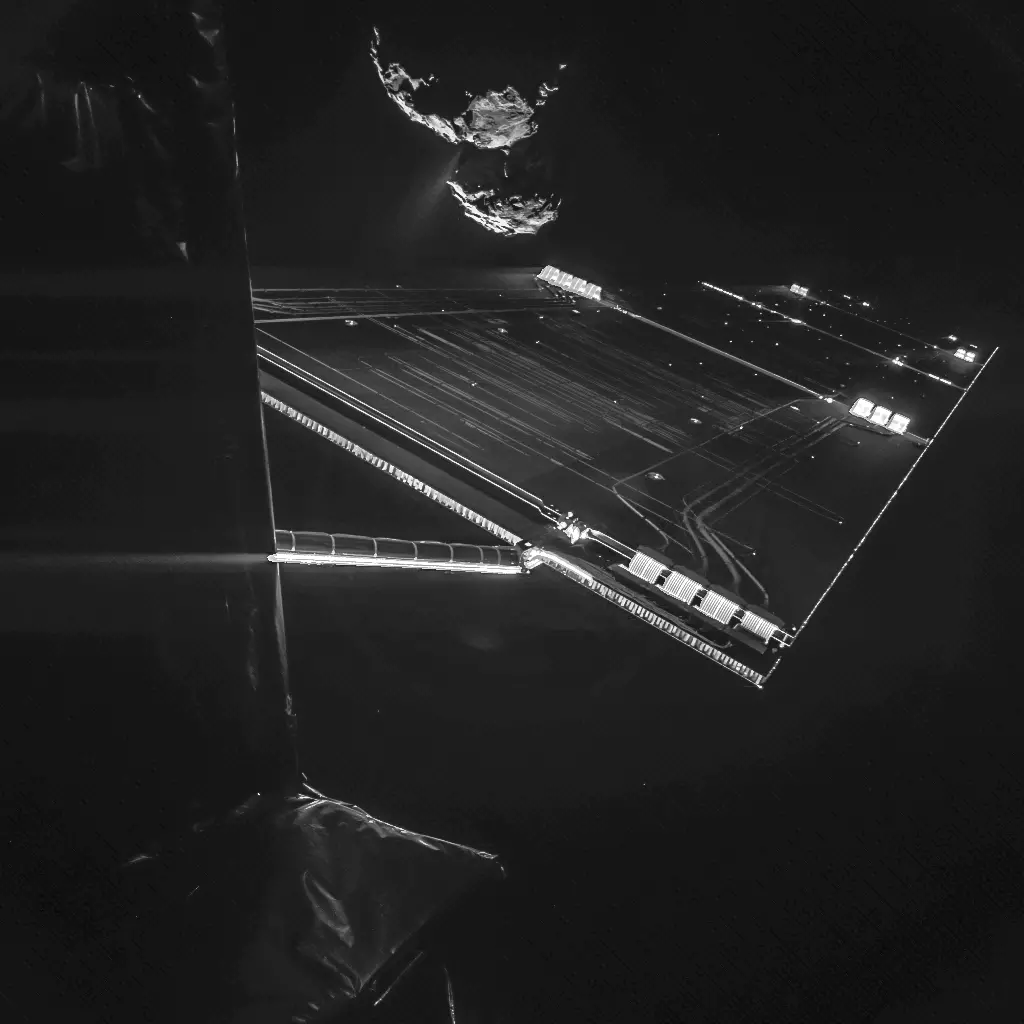In the vast expanse of our solar system, comets stand as silent time capsules, preserving remnants of the early days when the Sun and its planets came into being. Two decades ago, on March 2, 2004, the European Space Agency (ESA) embarked on a groundbreaking mission, launching the Rosetta spacecraft aboard an Ariane 5 from French Guiana. Little did the world know that this mission would push the boundaries of space science, attempting not only to rendezvous with a comet but also to land on its surface.
The original target for the Rosetta mission was comet 46P/Wirtanen in 2003. However, a setback with an Ariane 5 launcher grounded the mission until the issue was resolved. With only one chance to intercept a comet, scientists shifted their focus to a new target with a similar orbit — comet 67P Churyumov-Gerasimenko (67P). Thus began Rosetta’s remarkable 7.9 billion-kilometer journey.
Over its 10-year odyssey, the Airbus-built Rosetta utilized the gravitational pull of Earth and Mars in a series of orbital maneuvers, resembling a cosmic slingshot, to achieve the staggering speed of 55,000 km/h (over 15 km per second). Catching up with the comet, a mere 4 km wide, was likened to a fly trying to land on a speeding bullet. As Rosetta shadowed 67P at its closest point to the Sun, it reached a breathtaking 123,000 km/h.

Rosetta’s resilience shone as it endured the harsh conditions of space, ranging from the scorching heat near Venus to temperatures plummeting to minus 270°C in the frigid depths near Jupiter. The spacecraft’s revolutionary solar arrays, developed to operate in low sunlight conditions, later influenced the design of subsequent Airbus spacecraft, including the JUICE mission launched in 2023, bound for Jupiter and its icy moons.
In July 2011, Rosetta entered hibernation to conserve energy, enduring its cold and solitary journey. It was reawakened in January 2014, commencing its final approach to 67P. On August 6, 2014, Rosetta’s thrusters placed it into a tight orbit just 100 km above the comet, allowing it to meticulously study and map the celestial body.
Philae, the small lander attached to Rosetta, achieved a historic feat by successfully landing on the surface of 67P. Yet, this was just one of Rosetta’s many accomplishments. Equipped with 11 instruments, Rosetta conducted comprehensive measurements of the inactive comet, observed its activity as it approached the Sun, and witnessed its transition back to dormancy. Philae, unfortunately, went into hibernation after 55 hours due to its shaded resting spot.
Remarkably, Philae reawakened in June 2015, transmitting more invaluable data to Rosetta from its unique location, later revealed to be a dark crack named Abydos. On September 30, 2016, Rosetta’s mission concluded with a controlled descent onto the comet’s surface, touching down at a sedate walking pace of 2 km/h.
Rosetta’s legacy is etched in the annals of space exploration, not just for the unforgettable comet landing of Philae but for the spacecraft’s enduring journey with signals taking up to 40 minutes to reach Earth. Operating autonomously, Rosetta orbited 67P from altitudes of 100 km down to 2 km, continuously scanning the comet, capturing breathtaking photos, and generating vast volumes of scientific data. Its meticulous navigation systems ensured a perfect view for all 11 instruments, creating a mission to be remembered for generations. The Rosetta mission not only expanded our understanding of comets but also exemplified the indomitable spirit of human exploration reaching beyond the horizon into the unknown.
